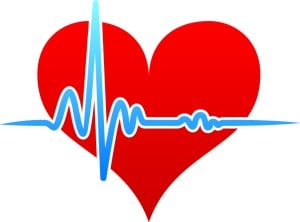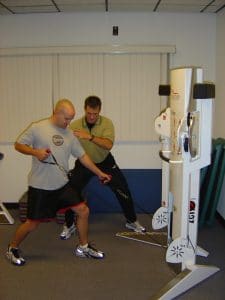Death in the Line of Duty…A report from the NIOSH Fire Fighter Fatality Investigation and Prevention Program
F2016-17 Date Released: December 13, 2016Executive Summary
On August 17, 2015, a 40-year-old male career Lieutenant (LT) arrived for duty at his fire station at 0600 hours. He exercised by lifting weights in the fire station gym and running outside. A crewmember arriving at the station at 0735 hours for an emergency medical call found the LT sitting on the dayroom couch unresponsive. Despite cardiopulmonary resuscitation (CPR) and advanced life support, the LT was pronounced dead at the scene.The death certificate and the autopsy report were completed by the Associate Chief Medical Examiner. The cause of death was listed as “hemopericardium” due to “aortic dissection.”
It is unlikely the following recommendations could have prevented the LT’s death. Nonetheless, the NIOSH investigators offer these recommendations to reduce the risk of on-the-job heart attacks and sudden cardiac arrest among fire fighters.
Key Recommendations
- Provide annual medical evaluations to all fire fighters consistent with National Fire Protection Association (NFPA) 1582, Standard on Comprehensive Occupational Medical Program for Fire Departments, to identify fire fighters at increased risk for coronary heart disease (CHD)
- Ensure that fire fighters are cleared for return to duty by a physician knowledgeable about the physical demands of fire fighting, the personal protective equipment used by fire fighters, and the components of NFPA 1582
- Provide fire fighters with medical clearance to wear a self-contained breathing apparatus (SCBA) as part of the fire department’s medical evaluation program
- Perform an annual physical ability evaluation
- Phase in a mandatory comprehensive wellness and fitness program for fire fighters
Howmuch should I weigh for my height and age?
Of course you could just look at yourself in the mirror and make your own judgement, but for health reasons it may be important to know what’s normal and what’s not for your age.
Then, if you find out that you are too heavy for your height and age, you can do something about it.
The Body Mass Index Chart
The Body Mass Index or BMI is generally used to measure human body fat based on an individual’s weight and height. Body mass index is defined as the individual’s body weight divided by the square of his or her height.The below graph shows what the normal measurements would be (both in pounds and kilograms). The aim of course is to end up in the normal range!
================
How to Reduce Heart Disease in Firefighters…
Its been very well documented that the leading cause of firefighter-on-duty deaths is related to heart disease. Therefore any information regarding decreasing the chances of heart disease are very valuable to the firefighting community. I’ve recently been researching the correlation between cholesterol and heart disease and have found some interesting correlations.
The long-established dietary recommendations of yesterday have created epidemics of obesity and diabetes, the consequences of which dwarf any historical plague in terms of mortality, human suffering and dire economic consequences. Despite the fact that 25% of the population
 takes expensive statin medications and despite the fact we have reduced the fat content of our diets, more Americans will die this year of heart disease than ever before. Statistics from the American Heart Association show that 75 million Americans currently suffer from heart disease, 20 million have diabetes and 57 million have pre-diabetes. These disorders are affecting younger and younger people in greater numbers every year.
takes expensive statin medications and despite the fact we have reduced the fat content of our diets, more Americans will die this year of heart disease than ever before. Statistics from the American Heart Association show that 75 million Americans currently suffer from heart disease, 20 million have diabetes and 57 million have pre-diabetes. These disorders are affecting younger and younger people in greater numbers every year. Many risk factors contribute to the development of heart disease, or atherosclerosis (hardening of the arteries). So what is the main culprit to the increasing numbers to this Heart Disease epidemic? Is it high cholesterol? About 50% of heart attacks and strokes occur in people with normal cholesterol levels. This suggests that many people at risk are presumably “healthy” because they have normal cholesterol levels.
What I’ve found is that there is a huge correlation between inflammation and heart disease. Did you know that inflammation in the arteries, not necessarily cholesterol, contributes to heart attacks and strokes?
Inflammation is involved in all stages of atherosclerosis, and triggers heart attacks and strokes. Simply stated, without inflammation being present in the body, there is no way that cholesterol would accumulate in the wall of the blood vessel and cause heart disease and strokes. Without inflammation, cholesterol would move freely throughout the body as nature intended. It is inflammation that causes cholesterol to become trapped.
What is inflammation? Inflammation is not complicated — it is quite simply your body’s natural defence to a foreign invader such as a bacteria, toxin or virus. The body can easily and efficiently handle acute cases of inflammation from bacterial and viral invaders. However, if we chronically expose the body to injury by toxins or foods the human body was never designed to process, a condition occurs called chronic inflammation. This chronic inflammation can then lead to major health issue including heart disease.
 What are the biggest culprits of chronic inflammation? Quite simply, inflammation is the body’s response to the overload of simple, highly processed carbohydrates (sugar, flour and all the products made from them) and the excess consumption of omega-6 vegetable oils like soybean, corn and sunflower that are found in many processed foods. Basically, inflammation in our blood vessels is caused by the low fat diet recommended for years by mainstream medicine.
What are the biggest culprits of chronic inflammation? Quite simply, inflammation is the body’s response to the overload of simple, highly processed carbohydrates (sugar, flour and all the products made from them) and the excess consumption of omega-6 vegetable oils like soybean, corn and sunflower that are found in many processed foods. Basically, inflammation in our blood vessels is caused by the low fat diet recommended for years by mainstream medicine. Take a moment to visualize rubbing a stiff brush repeatedly over soft skin until it becomes quite red and nearly bleeding. you kept this up several times a day, every day for five years. If you could tolerate this painful brushing, you would have a bleeding, swollen infected area that became worse with each repeated injury. This is a good way to visualize the inflammatory process that could be going on in your body right now.
Let me restate that, the recommended mainstream diet that is low in fat and high in polyunsaturated fats and carbohydrates, has been causing repeated injury to our blood vessels. This repeated injury creates chronic inflammation leading to heart disease, stroke, diabetes and obesity. So when you savor the tantalizing taste of a sweet roll, your body responds alarmingly as if a foreign invader arrived declaring war. Foods loaded with sugars and simple carbohydrates, or processed with omega-6 oils for long shelf life have been the mainstay of the American diet for six decades. These foods have been slowly poisoning everyone.
The proof is in the pudding, over the last 20 years the American diet has decreased its fat content, and replaced it with processed sugars and sweeteners yet the rates of obesity, heart disease and diabetes have sky-rocketed. Don’t believe me? Research for yourself (and let me know what you find out).
What can you do about it?
My research has shown that there are 3 things you can do immediately to help lower the inflammation in your body:
1. Stop smoking. Smoking causes inflammation in the body (due to the inhaled toxins) and hardens the arteries. Research shows you can reverse all of the damaging effects smoking causes within 5-10 years.

2. Change your diet. Minimize the processed foods in your diet, eat fruits, nuts and vegetables regularly. Researchers have shown that people who stick with a Mediterranean-style diet—based on fruits, vegetables, whole grains, nuts, and olive oil—can lower their levels of inflammation. This may not correlate with your current diet around the firehouse but we (as a firefighting community) need to change our culture. (Get your fire rescue workout, eating guidelines and FRF Healthy Firehouse Cookbook HERE.) You can also decrease inflammation by reducing saturated fat and trans fats and eating more foods rich in alpha-linolenic acid—like flaxseed, walnuts, and canola oil—and omega-3 fats. Personally, my father has decreased his cholesterol, increased his energy and lost weight by adding a krill oil supplement. You can read about krill oil HERE.

3. Get active. Exercise is a great way to lower inflammation without any side effects associated with medications. Aim for five days a week, at least (get a program here).
For more great Firefighter Fitness Information check out www.FireRescueFitness.com
Additional Resources
Hansson, G. K. (April 21, 2005). Inflammation, Atherosclerosis, and Coronary Artery Disease. N Engl J Med retrieved April 16, 2010 from: http://www.nejm.org/doi/full/10.1056/NEJMra043430
Kotz, D. (November 11, 2008). 6 Ways to Reduce Inflammation—Without a Statin or a Heart Test. Retrieved on April 17th, 2012 from: http://health.usnews.com/health-news/family-health/heart/articles/2008/11/11/6-ways-to-reduce-inflammation–without-a-statin-or-a-heart-test
Lundell, D. (March, 2012). Heart Surgeon Speaks Out On What Really Causes Heart Disease. PreventDisease.com. Retrieved April 18th, 2010 from: http://www.sott.net/articles/show/242516-Heart-Surgeon-Speaks-Out-On-What-Really-Causes-Heart-Disease
Ross R. (1999). Atherosclerosis – An inflammatory disease. N Engl J Med. 240: p115-126.
Walsh, B. (December, 2011). Video Presentation (Click here to watch video).



